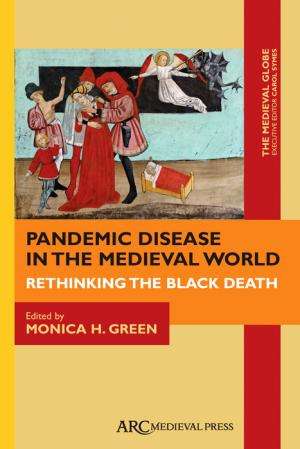New journal looks at significance of research on the Black Death

It was one of the most famous health issues in history. The Black Death spread from Asia throughout the Mediterranean, North Africa and Europe in the 14th century, and in just a decade it killed between 40 and 60 percent of the people living in those areas.
A new publication, "Pandemic Disease in the Medieval World: Rethinking the Black Death," looks at new research into the plague and its historical significance. The publication is the inaugural issue of a new journal, The Medieval Globe, sponsored by the University of Illinois Program in Medieval Studies.
Carol Symes, a professor of history and medieval studies at the U. of I., is the executive editor of the journal. Symes said the issue brings together scholars in the humanities and those in the sciences to consider the significance of the recent discoveries regarding the plague and their relevance to concerns today about emerging infectious diseases.
The journal issue looks at scientific breakthroughs of the past few years, including the 2011 sequencing of the genome of the plague pathogen entirely from historical remains, and the theory that a "big bang" of the organism occurred between the 12th and 14th centuries in an area now part of China, ultimately causing the Black Death pandemic. Articles consider how the infection might have spread, why it persisted and why some populations seemed to have immunity while other regions were wiped out. It also includes an article detailing the excavation of a Jewish cemetery in Catalonia, which provided archaeological evidence of an uprising against Jews, who were being blamed for the outbreak of disease.
"This kind of research can only be done when humanists and scientists can talk to one another," Symes said, adding the journal issue calls for more cooperation between those two groups of scholars to further the discussion on infectious diseases and how they can spread so quickly and remain active for so long.
Monica Green, a professor of history at Arizona State University, an expert in medieval medicine and health, and editor of the inaugural issue of "The Medieval Globe," said the global significance of the plague was much greater than she had realized and reached far beyond Europe. She said geneticists have compared the strain of the pathogen that caused the Black Death to those strains of plague still alive in the world today.
"The one that is closest genetically is in sub-Saharan Africa. The only way to explain that is this strain got to Africa at around the same time the Black Death got to Europe," Green said. "Really, almost all of the Old World might be involved in the story we're telling."
That global aspect of disease speaks to concerns today about how infectious diseases such as Ebola are spread.
"It's those human-to-human connections that have allowed the disease to transmit as it has," Green said. "Human-to-human relations of families that take care of one another. Health care. Burial. All have contributed to the Ebola outbreak.
"That's part of the essence of human disease, that we're the ones who are spreading it."
The terror caused by Ebola can be related to the hysteria surrounding the Black Death pandemic. An even better comparison, Green said, can be made with the AIDS epidemic.
"Treating AIDS in the early years, (health care workers) were dealing with a disease that they had no idea what it was, no idea how it was being transmitted," Green said.
She said the lessons of the Black Death include looking for a cause of a pandemic without placing blame, and looking at the global connections in the world that speed the spread of disease.
Symes said the journal also represents a new way of looking at medieval studies. Rather than focusing solely on Europe and its neighbors, it takes a global view of the Middle Ages and looks at connections to other parts of the world, including sub-Saharan Africa and the Americas.
More information: TMG 1 (2014):" Pandemic Disease in the Medieval World: Rethinking the Black Death," ed. Monica Green. scholarworks.wmich.edu/cgi/vie … ntext=medieval_globe

















